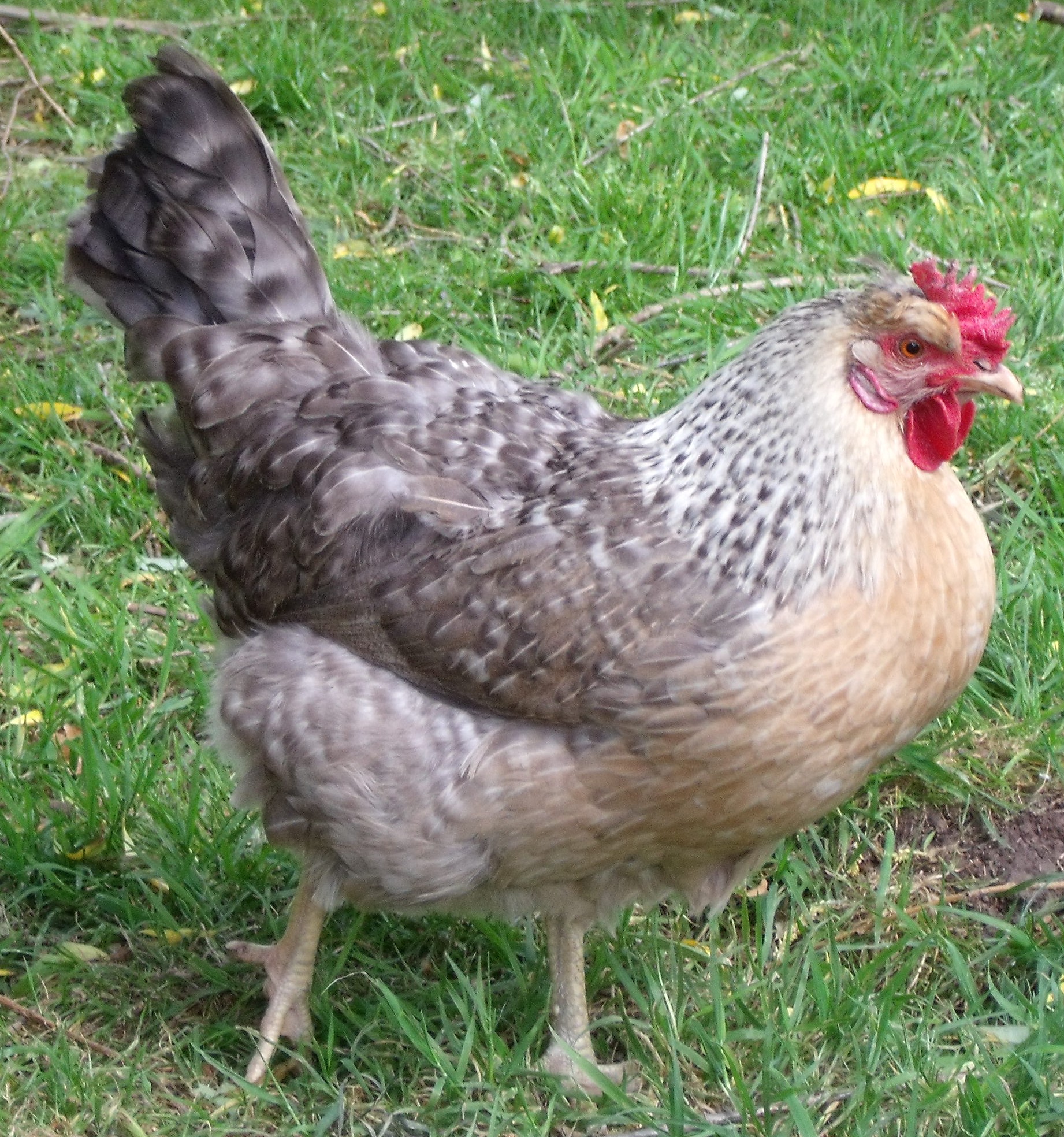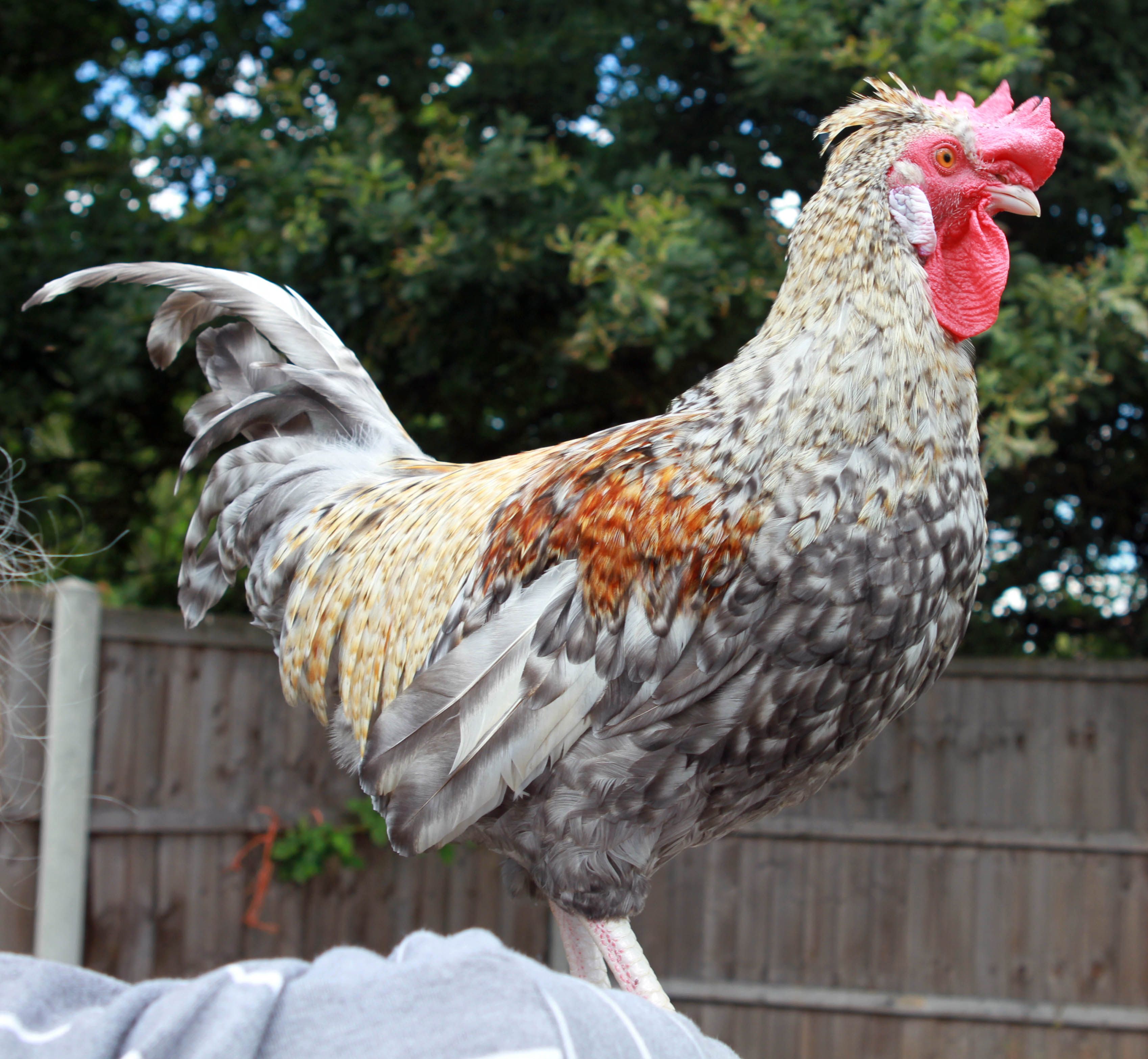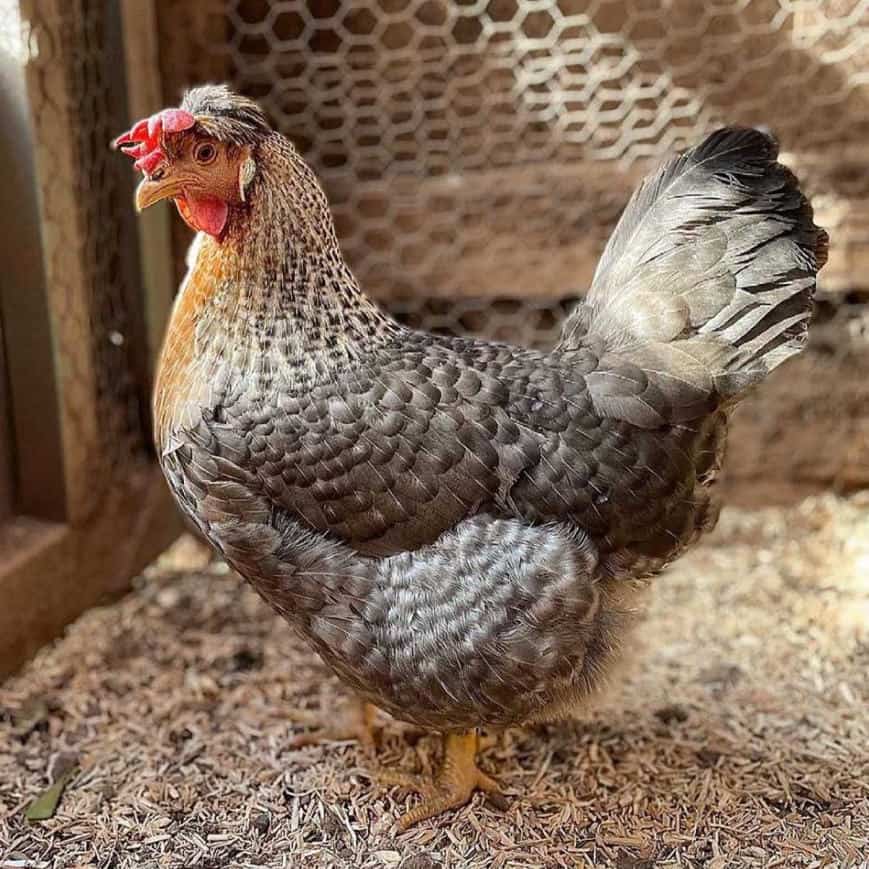Cream Legbar: The Crested Blue-Egg Layer For Your Backyard
Step into the fascinating world of backyard poultry, and you'll quickly encounter a breed that stands out with its unique charm and remarkable attributes: the Cream Legbar. This isn't just any chicken; it's a feathered marvel known for its distinctive appearance, incredibly friendly demeanor, and, perhaps most famously, its stunning blue eggs. Whether you're a seasoned chicken keeper or just starting your journey, the Cream Legbar offers a blend of beauty, practicality, and personality that makes it a firm favorite among enthusiasts worldwide.
From their elegant crests to their vibrant plumage, Cream Legbars are truly a sight to behold. But their appeal extends far beyond aesthetics. These birds are productive layers, often continuing to produce eggs even through the colder months, making them a reliable addition to any flock. Join us as we delve deep into everything you need to know about this extraordinary British breed, from its intriguing history and genetic wonders to practical care tips and why it might just be the perfect chicken for your home.
Table of Contents
- The Allure of the Cream Legbar: A Backyard Gem
- Why Blue Eggs? The Cream Legbar's Signature
- A Glimpse into History: The Cream Legbar's British Roots
- The Autosexing Marvel: Genetics in Action
- Distinctive Features: More Than Just Blue Eggs
- Temperament and Personality: A Friendly Flock Member
- Caring for Your Cream Legbar Chickens: A Comprehensive Guide
- Feeding Your Flock: Nutritional Needs of Cream Legbars
- Breeding and Incubation: Expanding Your Cream Legbar Flock
- Cream Legbars in the USA vs. UK: Rarity and Popularity
- Common Names and Varieties: Understanding the Legbar Family
- Is the Cream Legbar Right for You? Pros and Cons
- Conclusion
The Allure of the Cream Legbar: A Backyard Gem
The Cream Legbar chicken has become a firm favorite, especially in the US, largely due to its striking blue eggs. But their appeal extends far beyond the color of their shells. These birds are truly unique, boasting a distinctive crest, a friendly personality, and a plumage color that shifts from gold to cream, often with a mix of silver. They are beautiful birds for your backyard, mixing in well with existing breeds, and their calm demeanor makes them an excellent choice for families and first-time chicken keepers alike. Many people are initially drawn to their beautifully colored eggs, but they quickly fall in love with the birds themselves.
Beyond their aesthetic appeal, Cream Legbars are productive layers, capable of producing 150 to 200 eggs per year. What's even better is their reputation for laying through winter, a highly desirable trait for those who want a consistent supply of fresh eggs year-round. Proper care is crucial for keeping Cream Legbar chickens healthy and happy, ensuring they thrive and continue to enrich your flock with their vibrant presence and delightful eggs.
Why Blue Eggs? The Cream Legbar's Signature
The blue egg is undeniably the Cream Legbar's most famous calling card. While many chicken breeds lay brown or white eggs, the Cream Legbar lays a beautiful blue egg, sometimes olive or green, thanks to a genetic trait that deposits the pigment oocyanin on the eggshell during formation. This pigment permeates the entire shell, not just the surface, meaning the inside of the shell will also be blue.
The fascination with blue eggs has driven much of the Cream Legbar's popularity. They add a vibrant splash of color to any egg basket and are highly sought after by consumers who appreciate novelty and natural beauty. This consistent production of blue eggs, even through winter, makes them particularly valuable for small-scale egg producers and backyard enthusiasts who enjoy the aesthetic and uniqueness of their daily harvest.
A Glimpse into History: The Cream Legbar's British Roots
The history of the Cream Legbar chicken is a fascinating study in genetics, with its origins so well mapped, unlike many other breeds. This British chicken breed was developed in the early twentieth century by two brilliant geneticists, Reginald Crundall Punnett and Michael Pease, at the Genetical Institute of Cambridge University. Their goal was to create an autosexing chicken breed, meaning chicks could be sexed at hatch based on their down color, eliminating the need for vent sexing, which is a more difficult and often stressful process.
The breed was a meticulous mix of several existing chicken breeds, primarily Plymouth Rocks and Brown Leghorns, with Golden Campine genetics also contributing to its unique traits. This careful cross-breeding resulted in a chicken with a distinctive striped appearance, a wild crest, and the coveted ability to lay blue or green eggs. The Cream Legbar came from Britain to the United States nearly 100 years ago, bringing its unique attributes across the Atlantic and steadily gaining a following.
The Autosexing Marvel: Genetics in Action
One of the most remarkable features of the Cream Legbar is its autosexing capability. This means that male and female chicks can be easily distinguished as soon as they hatch, based on distinct differences in their down patterns and colors. This genetic marvel was a primary goal for Punnett and Pease, making the Cream Legbar a highly practical breed for breeders and hatcheries.
For example, Cream Legbar cockerel chicks typically have a clearer, more defined stripe down their back and a lighter head spot, while pullet chicks have a more diffuse, smudged stripe and a darker, less distinct head spot. This immediate sexing ability saves time and resources, making the breeding process more efficient and reducing the stress on young chicks. The Cream Legbar (or Crested Cream Legbar) is the most popular autosexing Legbar today, thanks in no small part to them laying blue-colored eggs, which adds to their overall appeal.
Distinctive Features: More Than Just Blue Eggs
Beyond their famous blue eggs, Cream Legbar chickens possess several striking physical characteristics that set them apart. The most noticeable is their prominent feather crest on their head, giving them a whimsical and charming appearance. This crest, often described as "wild," adds to their unique charm and is a hallmark of the breed.
Their plumage is another area of fantastic coloration. Cream Legbars typically exhibit a mix of gold, silver, and cream feathers, with a distinct barring pattern that gives them their "striped appearance." This combination of colors creates a beautiful, soft aesthetic that blends well into any backyard setting. The legbar has three color varieties, and the cream variant is the one with the crest and lays blue, olive, or green eggs, solidifying its place as a visually appealing and productive bird.
Temperament and Personality: A Friendly Flock Member
The Cream Legbar is not just beautiful and productive; it also boasts a friendly and calm temperament, making it an ideal choice for backyard chicken keepers, especially beginners. They are generally docile birds that mix well with existing breeds, showing little aggression towards other flock members. This makes integrating them into an established coop relatively easy.
Their friendly personality often leads to them being quite curious and interactive with their human caretakers. Many owners report their Cream Legbars being quite personable, even allowing themselves to be handled. For instance, one owner affectionately named her Cream Legbar "Scarlett O'Henna," highlighting the personal connection often formed with these charming birds. This docile nature also makes them suitable for families with children, as they are less prone to flightiness or pecking compared to some other breeds.
Caring for Your Cream Legbar Chickens: A Comprehensive Guide
Proper care is crucial for keeping Cream Legbar chickens healthy and happy. While generally hardy, providing them with the right environment and nutrition will ensure they thrive and continue to lay those beautiful blue eggs. Like all chickens, they require a secure coop that protects them from predators and the elements, with adequate ventilation and roosting space. Each chicken needs about 2-3 square feet inside the coop and 8-10 square feet in an outdoor run to prevent overcrowding and stress.
Regular cleaning of the coop is essential to maintain hygiene and prevent the build-up of ammonia, which can harm their respiratory systems. Fresh, clean water should always be available, as chickens consume a surprising amount of water, especially layers. Dust baths, a natural way for chickens to clean their feathers and deter parasites, should also be provided, either as a designated area in their run or a container filled with sand, dirt, and wood ash.
Feeding Your Flock: Nutritional Needs of Cream Legbars
Feeding Cream Legbar chickens correctly is vital for their health, egg production, and overall well-being. As layers, they require a high-quality layer feed that contains at least 16% protein and adequate calcium for strong eggshells. This feed should be the primary component of their diet, offered free-choice throughout the day.
In addition to their feed, oyster shells or another calcium supplement should be provided separately, especially for laying hens. This allows them to self-regulate their calcium intake based on their individual needs, which can fluctuate. While chickens enjoy treats like kitchen scraps, grains, and greens, these should be given in moderation, making up no more than 10% of their total diet. Overfeeding treats can lead to nutritional imbalances and reduced egg production. Access to grit is also important for digestion, as chickens don't have teeth and rely on grit in their gizzard to grind down food.
Breeding and Incubation: Expanding Your Cream Legbar Flock
Breeding Cream Legbars can be a rewarding experience, especially given their autosexing trait, which simplifies the process of identifying male and female chicks. If you plan to incubate their eggs, ensure you have a fertile rooster in your flock. The eggs should be collected daily, stored at a cool temperature (around 55-60°F or 13-15°C) with moderate humidity, and turned regularly until incubation.
Incubation typically takes 21 days, similar to most chicken breeds. Maintaining consistent temperature and humidity levels in the incubator is crucial for a successful hatch. Once hatched, Cream Legbar chicks, like all chicks, require a brooder with a heat source, fresh water, and chick starter feed. One notable characteristic of Cream Legbar chickens is that they are not quickly broody, although it can happen. Broody hens temporarily stop producing eggs, which can be inconvenient if you are not planning to hatch chicken eggs. This non-broody tendency means you can expect a more consistent egg supply from your hens without them frequently going "off-lay" to sit on eggs.
Cream Legbars in the USA vs. UK: Rarity and Popularity
The Cream Legbar's journey from its British origins to global popularity is quite interesting. Today, the Cream Legbar chicken enjoys its place in Britain's commercial flocks, indicating a degree of widespread recognition and use within its native country. However, Cream Legbar chickens are still quite rare in the USA compared to more common breeds like Rhode Island Reds or Plymouth Rocks. Despite this relative rarity, their popularity has been steadily growing, largely fueled by the demand for blue eggs and the increasing interest in unique backyard chicken breeds.
In the US, their status as a "rare breed of chicken" adds to their appeal for enthusiasts looking for something different. This often means they can be more expensive to acquire as chicks or hatching eggs, and finding reputable breeders might require a bit more effort. However, their unique attributes—the crest, blue eggs, and autosexing chicks—make the effort worthwhile for many.
Common Names and Varieties: Understanding the Legbar Family
The Cream Legbar is part of a larger family of Legbar chickens, which includes other color varieties, though the Cream variant is by far the most popular due to its distinctive crest and blue egg-laying ability. Common names for Cream Legbar chickens include various appellations such as "Crested Cream Legbar" and "Opal Legbars." These names often highlight their most striking features – the crest and the unique plumage coloration.
While the Cream Legbar is the most well-known, other Legbar varieties exist, such as the Gold Legbar and the Silver Legbar. However, it is the Cream Legbar that has captured the most attention globally, particularly for its blue eggs. The formal name "Crested Cream Legbar" is often used to specifically denote this particular variety, distinguishing it from other Legbar types that may not possess the same crest or lay blue eggs.
Is the Cream Legbar Right for You? Pros and Cons
Deciding if the Cream Legbar is the right addition to your flock involves weighing its many benefits against a few considerations. Here's a quick summary:
Pros:
- Beautiful Blue Eggs: Their signature blue, olive, or green eggs are a major draw, adding aesthetic appeal to your egg basket.
- Consistent Layers: You can expect 150 to 200 eggs per year, often continuing to lay even through winter.
- Autosexing Chicks: Simplifies breeding and sexing, making it easy to distinguish males from females at hatch.
- Friendly Temperament: They are generally docile, calm, and integrate well with other breeds, making them ideal for beginners and families.
- Unique Appearance: Their distinctive crest and attractive plumage (gold, silver, and cream feathers) make them a visually appealing addition to any backyard.
- Not Prone to Broodiness: While it can happen, Cream Legbars are not typically broody, ensuring a more consistent egg supply.
Cons:
- Rarity in the USA: They can be harder to find and potentially more expensive than common breeds.
- Specific Genetics: While a pro for autosexing, their specific genetic background means maintaining pure lines requires careful breeding.
- Crest Care: While beautiful, their crest can sometimes get dirty or matted and may require occasional cleaning, especially if their waterer isn't designed to keep their heads dry.
Overall, the Cream Legbar offers a compelling package for anyone looking to add a productive, beautiful, and friendly chicken to their backyard flock. Their unique traits and relatively easy-going nature make them a joy to keep.
Conclusion
The Cream Legbar chicken is truly a remarkable breed, offering a delightful combination of beauty, productivity, and a charming personality. From their fascinating history rooted in Cambridge University's genetic research to their signature blue eggs and the convenience of autosexing chicks, these birds are a testament to thoughtful breeding and a joy to have in any backyard. They are a rare breed of chicken with a crest, blue eggs, and autosexing chicks, embodying a unique blend of traits that captivate chicken enthusiasts.
Whether you're drawn to their striking appearance, their consistent egg-laying through winter, or their friendly demeanor, the Cream Legbar stands out as an exceptional choice. If you're considering adding a new dimension to your flock, learning about the Cream Legbar, an English heritage breed with a wild crest and plumage that shifts from gold to cream, is an excellent first step. Their unique attributes and relatively easy care make them an ideal addition for both novice and experienced chicken keepers alike. Have you had the pleasure of keeping Cream Legbars? Share your experiences and tips in the comments below, or explore more of our articles on backyard poultry to continue your journey!

Cream Legbar For Sale | Chickens | Breed Information | Omlet

Cream Legbar For Sale | Chickens | Breed Information | Omlet

Cream Legbar: Eggs, Height, Size and Raising Tips